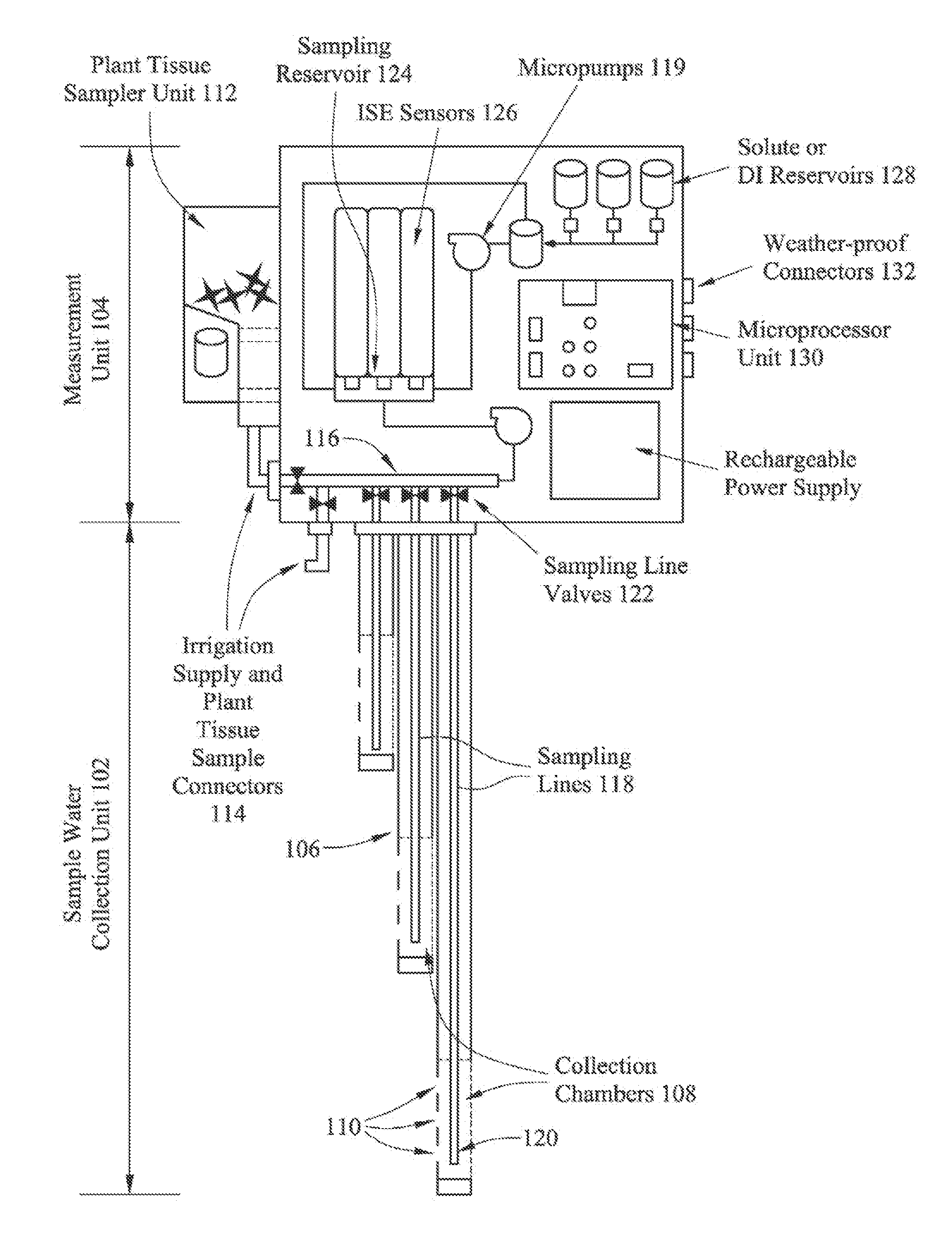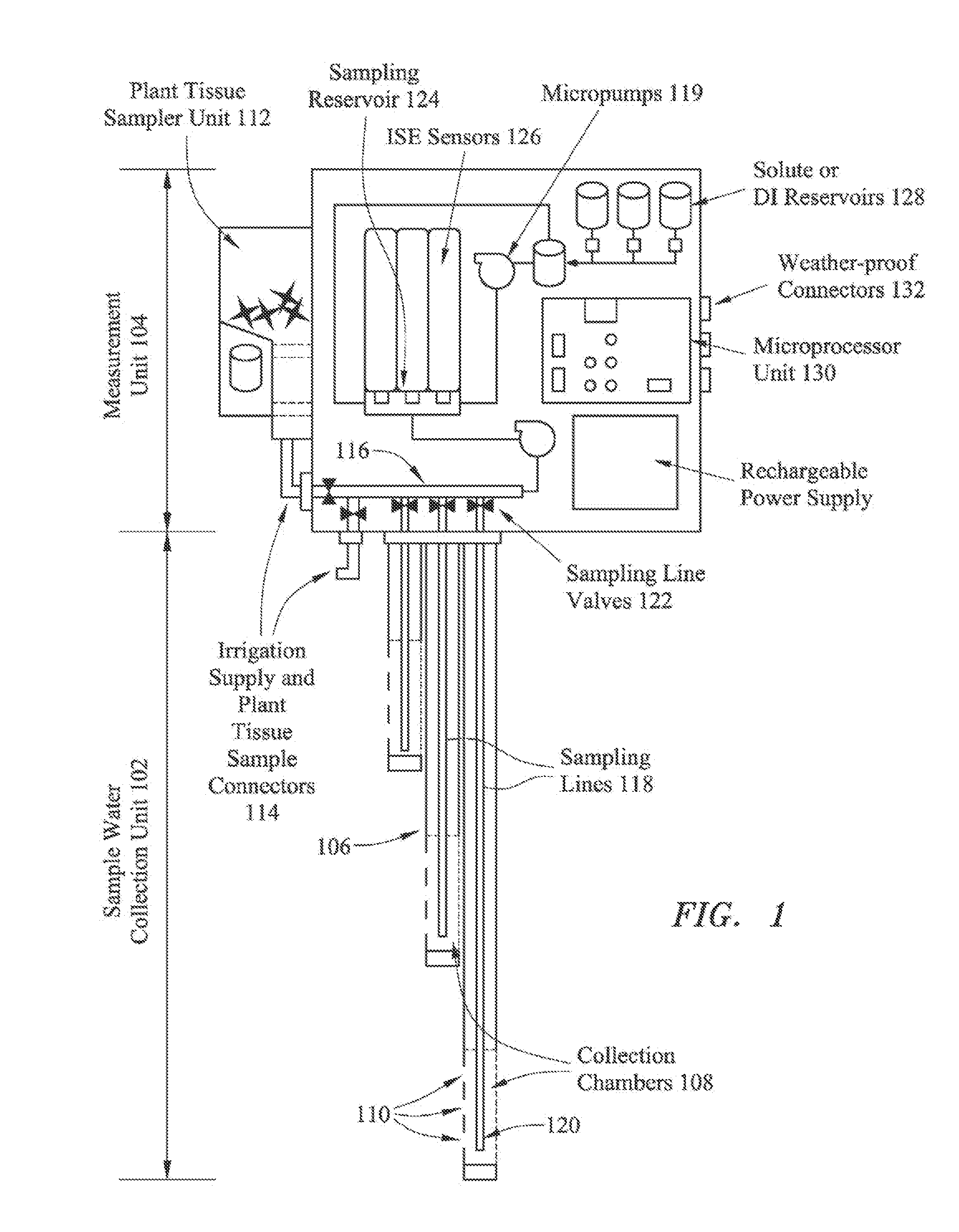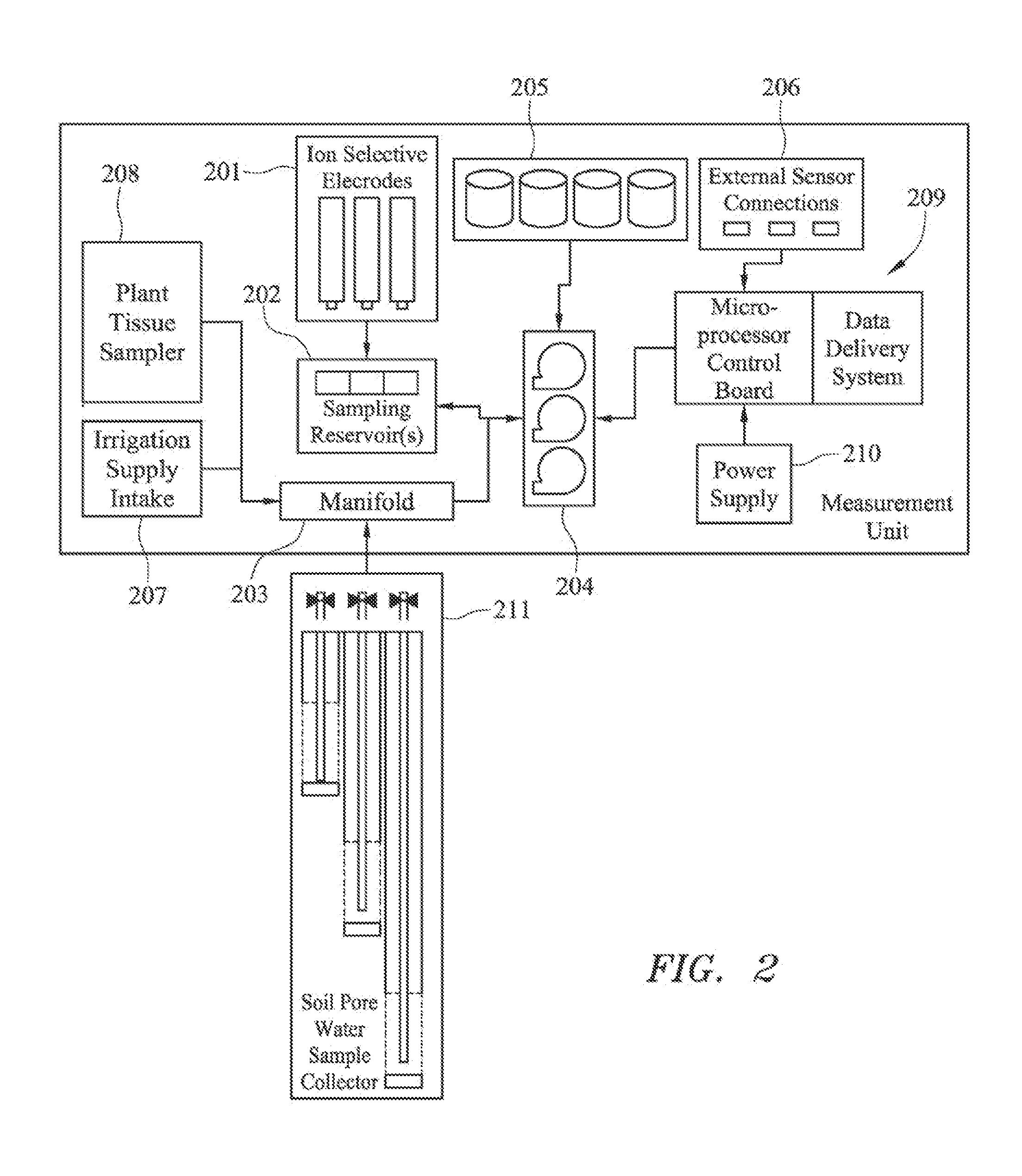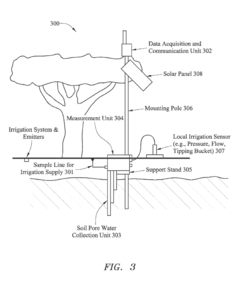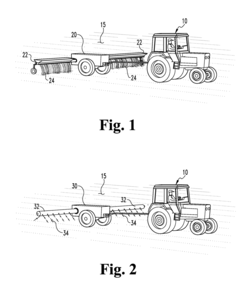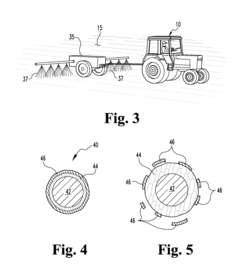How Nitrification Alters Nitrogen Dynamics In Forest Soils?
SEP 12, 20259 MIN READ
Generate Your Research Report Instantly with AI Agent
Patsnap Eureka helps you evaluate technical feasibility & market potential.
Forest Soil Nitrification Background and Objectives
Nitrification, the biological oxidation of ammonium to nitrate, represents a critical process in the nitrogen cycle of forest ecosystems. This transformation has been studied extensively since the early 20th century, with pioneering work by Winogradsky establishing the fundamental understanding of chemolithotrophic nitrification. Over the decades, our comprehension of this process has evolved significantly, revealing its complex interactions with forest soil dynamics and broader ecosystem functions.
The evolution of nitrification research in forest soils has progressed from basic identification of nitrifying organisms to sophisticated analyses of their genetic diversity and functional roles. Early research focused primarily on agricultural systems, with forest soil nitrification receiving dedicated attention only in the latter half of the 20th century. Recent technological advances in molecular biology and isotope analysis have revolutionized our understanding, revealing previously unrecognized nitrification pathways and microbial communities involved in this process.
Current trends in forest soil nitrification research emphasize the integration of microbial ecology with ecosystem-level nitrogen cycling. Particular attention is being directed toward understanding how climate change, atmospheric nitrogen deposition, and forest management practices alter nitrification rates and subsequent nitrogen dynamics. The discovery of archaeal ammonia oxidizers in forest soils has significantly expanded our understanding of the microbial communities responsible for nitrification beyond the traditional bacterial paradigm.
The primary objective of this technical research report is to comprehensively evaluate how nitrification processes alter nitrogen dynamics in forest soils across different forest types and environmental conditions. Specifically, we aim to: (1) characterize the mechanisms by which nitrification influences nitrogen retention, leaching, and availability in forest ecosystems; (2) assess how environmental factors and forest management practices modulate nitrification rates and subsequent nitrogen transformations; and (3) identify emerging technologies and methodologies for measuring and modeling nitrification processes in complex forest soil environments.
Additionally, this report seeks to bridge fundamental scientific understanding with practical applications for forest management. By synthesizing current knowledge on forest soil nitrification, we aim to provide insights that can inform sustainable forestry practices, ecosystem restoration efforts, and climate change mitigation strategies. The ultimate goal is to develop a predictive framework that allows for better management of nitrogen resources in forest ecosystems under changing environmental conditions.
This technical assessment will serve as a foundation for identifying knowledge gaps and prioritizing future research directions in the field of forest soil nitrogen dynamics, with particular emphasis on the transformative role of nitrification in these complex ecological systems.
The evolution of nitrification research in forest soils has progressed from basic identification of nitrifying organisms to sophisticated analyses of their genetic diversity and functional roles. Early research focused primarily on agricultural systems, with forest soil nitrification receiving dedicated attention only in the latter half of the 20th century. Recent technological advances in molecular biology and isotope analysis have revolutionized our understanding, revealing previously unrecognized nitrification pathways and microbial communities involved in this process.
Current trends in forest soil nitrification research emphasize the integration of microbial ecology with ecosystem-level nitrogen cycling. Particular attention is being directed toward understanding how climate change, atmospheric nitrogen deposition, and forest management practices alter nitrification rates and subsequent nitrogen dynamics. The discovery of archaeal ammonia oxidizers in forest soils has significantly expanded our understanding of the microbial communities responsible for nitrification beyond the traditional bacterial paradigm.
The primary objective of this technical research report is to comprehensively evaluate how nitrification processes alter nitrogen dynamics in forest soils across different forest types and environmental conditions. Specifically, we aim to: (1) characterize the mechanisms by which nitrification influences nitrogen retention, leaching, and availability in forest ecosystems; (2) assess how environmental factors and forest management practices modulate nitrification rates and subsequent nitrogen transformations; and (3) identify emerging technologies and methodologies for measuring and modeling nitrification processes in complex forest soil environments.
Additionally, this report seeks to bridge fundamental scientific understanding with practical applications for forest management. By synthesizing current knowledge on forest soil nitrification, we aim to provide insights that can inform sustainable forestry practices, ecosystem restoration efforts, and climate change mitigation strategies. The ultimate goal is to develop a predictive framework that allows for better management of nitrogen resources in forest ecosystems under changing environmental conditions.
This technical assessment will serve as a foundation for identifying knowledge gaps and prioritizing future research directions in the field of forest soil nitrogen dynamics, with particular emphasis on the transformative role of nitrification in these complex ecological systems.
Ecosystem Demand Analysis for Nitrogen Cycling
Nitrogen cycling in forest ecosystems represents a critical component of global biogeochemical processes, with significant implications for ecosystem productivity, biodiversity, and environmental quality. The demand for nitrogen within forest ecosystems is driven by multiple biological processes and environmental factors that collectively determine the efficiency and sustainability of nitrogen utilization.
Primary vegetation demands for nitrogen in forest ecosystems vary significantly across different forest types. Temperate forests typically require 50-100 kg N/ha/year, while tropical forests may demand 100-300 kg N/ha/year due to higher productivity rates and year-round growth patterns. Coniferous forests generally exhibit lower nitrogen requirements compared to deciduous forests, reflecting differences in growth strategies and resource allocation patterns.
Microbial communities play a dual role in nitrogen cycling, simultaneously creating demand for nitrogen while facilitating its transformation and availability. Soil microorganisms immobilize approximately 20-40% of available nitrogen during active growth phases, temporarily reducing plant-available nitrogen but ultimately contributing to long-term soil fertility through organic matter decomposition and nutrient release.
Seasonal variations significantly impact nitrogen demand patterns in forest ecosystems. Spring growth periods typically see peak nitrogen uptake rates, with deciduous forests showing particularly pronounced seasonal patterns compared to evergreen systems. These temporal dynamics create complex interactions between nitrogen availability and ecosystem demands throughout annual cycles.
Climate change is altering traditional nitrogen demand patterns in forest ecosystems. Warming temperatures extend growing seasons in temperate and boreal forests, potentially increasing annual nitrogen requirements by 10-25%. Simultaneously, altered precipitation patterns affect soil moisture regimes, influencing nitrogen mineralization rates and creating mismatches between nitrogen availability and plant uptake capacity.
Disturbance regimes, including fire, insect outbreaks, and logging, dramatically reshape nitrogen demand dynamics. Post-disturbance recovery phases typically exhibit elevated nitrogen requirements as vegetation reestablishes, with early successional species often demonstrating higher nitrogen use efficiency compared to mature forest communities.
The nitrogen saturation hypothesis suggests that continued nitrogen deposition eventually leads to ecosystem nitrogen saturation, where inputs exceed biological demand. This condition results in increased nitrogen leaching, soil acidification, and potential shifts in vegetation composition toward nitrophilic species, fundamentally altering ecosystem structure and function.
Understanding these complex demand dynamics is essential for predicting how nitrification processes will influence overall nitrogen cycling in forest soils, particularly as human activities continue to alter atmospheric nitrogen inputs and climate conditions across global forest ecosystems.
Primary vegetation demands for nitrogen in forest ecosystems vary significantly across different forest types. Temperate forests typically require 50-100 kg N/ha/year, while tropical forests may demand 100-300 kg N/ha/year due to higher productivity rates and year-round growth patterns. Coniferous forests generally exhibit lower nitrogen requirements compared to deciduous forests, reflecting differences in growth strategies and resource allocation patterns.
Microbial communities play a dual role in nitrogen cycling, simultaneously creating demand for nitrogen while facilitating its transformation and availability. Soil microorganisms immobilize approximately 20-40% of available nitrogen during active growth phases, temporarily reducing plant-available nitrogen but ultimately contributing to long-term soil fertility through organic matter decomposition and nutrient release.
Seasonal variations significantly impact nitrogen demand patterns in forest ecosystems. Spring growth periods typically see peak nitrogen uptake rates, with deciduous forests showing particularly pronounced seasonal patterns compared to evergreen systems. These temporal dynamics create complex interactions between nitrogen availability and ecosystem demands throughout annual cycles.
Climate change is altering traditional nitrogen demand patterns in forest ecosystems. Warming temperatures extend growing seasons in temperate and boreal forests, potentially increasing annual nitrogen requirements by 10-25%. Simultaneously, altered precipitation patterns affect soil moisture regimes, influencing nitrogen mineralization rates and creating mismatches between nitrogen availability and plant uptake capacity.
Disturbance regimes, including fire, insect outbreaks, and logging, dramatically reshape nitrogen demand dynamics. Post-disturbance recovery phases typically exhibit elevated nitrogen requirements as vegetation reestablishes, with early successional species often demonstrating higher nitrogen use efficiency compared to mature forest communities.
The nitrogen saturation hypothesis suggests that continued nitrogen deposition eventually leads to ecosystem nitrogen saturation, where inputs exceed biological demand. This condition results in increased nitrogen leaching, soil acidification, and potential shifts in vegetation composition toward nitrophilic species, fundamentally altering ecosystem structure and function.
Understanding these complex demand dynamics is essential for predicting how nitrification processes will influence overall nitrogen cycling in forest soils, particularly as human activities continue to alter atmospheric nitrogen inputs and climate conditions across global forest ecosystems.
Current Status and Challenges in Forest Soil Nitrification
Nitrification research in forest soils has advanced significantly in recent decades, revealing complex interactions between microbial communities, soil properties, and environmental factors. Current global studies indicate that nitrification rates vary substantially across different forest ecosystems, with temperate forests generally exhibiting higher rates than boreal or tropical forests. This variation is primarily attributed to differences in soil pH, temperature regimes, and organic matter quality.
The microbial communities responsible for nitrification in forest soils have been increasingly characterized through molecular techniques. Recent metagenomic analyses have identified previously unknown ammonia-oxidizing archaea (AOA) that often outnumber ammonia-oxidizing bacteria (AOB) in acidic forest soils. These findings challenge traditional understanding of nitrification processes that focused predominantly on bacterial communities.
Climate change presents a significant challenge to forest soil nitrification dynamics. Rising temperatures accelerate nitrification rates in many forest ecosystems, potentially leading to increased nitrogen losses through leaching and gaseous emissions. Concurrently, altered precipitation patterns affect soil moisture conditions, creating fluctuating aerobic-anaerobic interfaces that complicate nitrification-denitrification coupling.
Anthropogenic nitrogen deposition continues to impact forest ecosystems globally, with approximately 25-30% of forests experiencing nitrogen saturation in developed regions. This excess nitrogen alters the competitive balance between nitrifiers and other soil microorganisms, potentially reducing forest biodiversity and resilience to environmental stressors.
Methodological challenges persist in accurately measuring nitrification rates in heterogeneous forest soils. Traditional methods like isotope dilution techniques may underestimate actual rates due to rapid internal cycling and microsites with varying nitrification potentials. Advanced techniques combining stable isotope probing with high-throughput sequencing offer promising approaches but remain technically challenging and resource-intensive.
The spatial heterogeneity of forest soils presents another significant challenge. Nitrification hotspots often occur at interfaces between organic and mineral soil layers or around tree roots, creating complex spatial patterns that are difficult to capture in sampling designs. This heterogeneity complicates efforts to scale measurements from plot to landscape levels.
Integrating nitrification into forest ecosystem models remains problematic due to insufficient parameterization data across diverse forest types. Current models often rely on simplified representations that fail to capture the dynamic nature of nitrification responses to environmental changes, limiting their predictive power for nitrogen cycling under future climate scenarios.
The microbial communities responsible for nitrification in forest soils have been increasingly characterized through molecular techniques. Recent metagenomic analyses have identified previously unknown ammonia-oxidizing archaea (AOA) that often outnumber ammonia-oxidizing bacteria (AOB) in acidic forest soils. These findings challenge traditional understanding of nitrification processes that focused predominantly on bacterial communities.
Climate change presents a significant challenge to forest soil nitrification dynamics. Rising temperatures accelerate nitrification rates in many forest ecosystems, potentially leading to increased nitrogen losses through leaching and gaseous emissions. Concurrently, altered precipitation patterns affect soil moisture conditions, creating fluctuating aerobic-anaerobic interfaces that complicate nitrification-denitrification coupling.
Anthropogenic nitrogen deposition continues to impact forest ecosystems globally, with approximately 25-30% of forests experiencing nitrogen saturation in developed regions. This excess nitrogen alters the competitive balance between nitrifiers and other soil microorganisms, potentially reducing forest biodiversity and resilience to environmental stressors.
Methodological challenges persist in accurately measuring nitrification rates in heterogeneous forest soils. Traditional methods like isotope dilution techniques may underestimate actual rates due to rapid internal cycling and microsites with varying nitrification potentials. Advanced techniques combining stable isotope probing with high-throughput sequencing offer promising approaches but remain technically challenging and resource-intensive.
The spatial heterogeneity of forest soils presents another significant challenge. Nitrification hotspots often occur at interfaces between organic and mineral soil layers or around tree roots, creating complex spatial patterns that are difficult to capture in sampling designs. This heterogeneity complicates efforts to scale measurements from plot to landscape levels.
Integrating nitrification into forest ecosystem models remains problematic due to insufficient parameterization data across diverse forest types. Current models often rely on simplified representations that fail to capture the dynamic nature of nitrification responses to environmental changes, limiting their predictive power for nitrogen cycling under future climate scenarios.
Established Methodologies for Measuring Nitrification Processes
01 Biological nitrification processes
Biological nitrification involves the oxidation of ammonia to nitrite and then to nitrate by specific bacteria. This two-step process is crucial in nitrogen cycling and wastewater treatment. The first step is performed by ammonia-oxidizing bacteria (AOB) that convert ammonia to nitrite, while the second step involves nitrite-oxidizing bacteria (NOB) that convert nitrite to nitrate. These biological processes can be optimized in treatment systems to effectively remove nitrogen compounds from wastewater.- Biological nitrification processes: Biological nitrification involves the oxidation of ammonia to nitrite and then to nitrate by specific microorganisms. This two-step process is crucial in nitrogen cycling and is carried out by ammonia-oxidizing bacteria (AOB) and nitrite-oxidizing bacteria (NOB). These biological processes can be optimized in wastewater treatment systems to effectively remove nitrogen compounds, reducing environmental pollution and improving water quality.
- Controlled-release nitrogen fertilizers: Controlled-release nitrogen fertilizers are designed to gradually release nitrogen into soil, synchronizing with plant uptake patterns. These formulations minimize nitrogen loss through leaching and volatilization while maintaining optimal nitrogen availability throughout the growing season. Various coating technologies and chemical modifications are employed to regulate the release rate, improving nitrogen use efficiency and reducing environmental impacts associated with conventional fertilizers.
- Nitrification inhibitors and management: Nitrification inhibitors are compounds that slow the biological oxidation of ammonium to nitrate by suppressing the activity of nitrifying bacteria. These inhibitors help maintain nitrogen in the ammonium form for longer periods, reducing losses through leaching and denitrification. Strategic application of these inhibitors, along with proper timing and placement of nitrogen fertilizers, can significantly improve nitrogen use efficiency in agricultural systems.
- Advanced wastewater treatment systems: Advanced wastewater treatment systems incorporate specialized processes for nitrogen removal through nitrification and denitrification. These systems often employ sequencing batch reactors, membrane bioreactors, or moving bed biofilm reactors to create optimal conditions for nitrifying and denitrifying microorganisms. By carefully controlling parameters such as dissolved oxygen, temperature, and hydraulic retention time, these systems achieve high nitrogen removal efficiencies while minimizing energy consumption.
- Monitoring and modeling nitrogen dynamics: Advanced monitoring techniques and mathematical models are essential for understanding and predicting nitrogen dynamics in various ecosystems. These approaches involve real-time sensors, molecular biology tools, and computational models that track nitrogen transformations and movements. By integrating data on microbial activity, environmental conditions, and chemical processes, researchers and practitioners can optimize nitrogen management strategies and minimize environmental impacts in agricultural, urban, and natural systems.
02 Advanced nitrogen removal technologies
Advanced technologies for nitrogen removal combine nitrification with denitrification processes to achieve complete nitrogen elimination. These systems often utilize specialized reactor configurations, membrane bioreactors, or sequencing batch reactors to create optimal conditions for both aerobic nitrification and anoxic denitrification. Some innovative approaches include simultaneous nitrification-denitrification (SND) processes that can occur within the same reactor under carefully controlled conditions, reducing operational costs and space requirements.Expand Specific Solutions03 Nitrogen dynamics in agricultural applications
Nitrogen dynamics in agricultural contexts involve understanding how nitrogen transforms and moves through soil-plant systems. This includes processes of mineralization, nitrification, plant uptake, and potential losses through leaching or volatilization. Controlled-release fertilizers and nitrification inhibitors can be used to synchronize nitrogen availability with plant demand, improving nitrogen use efficiency and reducing environmental impacts. Proper management of these dynamics is essential for sustainable agriculture and environmental protection.Expand Specific Solutions04 Monitoring and control systems for nitrification
Advanced monitoring and control systems are essential for optimizing nitrification processes. These systems utilize sensors to measure parameters such as dissolved oxygen, pH, temperature, and nitrogen compound concentrations in real-time. Automated control algorithms can adjust operational parameters to maintain optimal conditions for nitrifying microorganisms. Some systems incorporate artificial intelligence or machine learning to predict process performance and make proactive adjustments, improving efficiency and stability of nitrogen removal processes.Expand Specific Solutions05 Novel reactor designs for enhanced nitrification
Innovative reactor designs can significantly improve nitrification efficiency and nitrogen removal rates. These include moving bed biofilm reactors (MBBR), integrated fixed-film activated sludge (IFAS) systems, and granular sludge reactors. Such designs provide increased surface area for biofilm development, allowing for higher concentrations of nitrifying bacteria while requiring smaller footprints. Some novel reactors incorporate multiple treatment zones or stages to optimize conditions for different microbial populations involved in the nitrogen transformation processes.Expand Specific Solutions
Key Research Groups and Institutions in Soil Nitrogen Studies
The nitrification process in forest soils is at a critical research stage, with market growth driven by increasing concerns about nitrogen dynamics and sustainable forestry practices. The competitive landscape features academic institutions leading fundamental research, including University of Melbourne, Zhejiang University, and China Agricultural University, alongside corporate players developing practical applications. Companies like Verdesian Life Sciences, Yara International, and BASF are advancing commercial solutions for nitrogen management, while specialized firms such as Soilgenic Technologies and Actagro focus on innovative soil health technologies. The technology is maturing from basic research to applied solutions, with collaboration between academic and industrial sectors accelerating development of sustainable nitrogen management practices for forest ecosystems.
Institute of Soil Science, Chinese Academy of Sciences
Technical Solution: The Institute of Soil Science at the Chinese Academy of Sciences has developed comprehensive monitoring systems to track nitrification processes in forest soils across various ecological zones in China. Their approach combines high-throughput molecular techniques with stable isotope probing to identify key nitrifying microorganisms and quantify nitrification rates in different forest ecosystems. Their research has revealed that nitrification rates in Chinese forest soils vary significantly with forest type, soil pH, and nitrogen deposition levels, with particularly accelerated nitrification observed in forests receiving high atmospheric nitrogen deposition[1]. They've pioneered the use of nitrification inhibitors specifically formulated for forest soil conditions, which can effectively reduce nitrate leaching by up to 45% while maintaining forest productivity[2]. Their long-term experimental forests serve as living laboratories for studying how climate change affects nitrification dynamics across temporal and spatial scales.
Strengths: Extensive network of field sites across diverse forest ecosystems in China; strong integration of molecular biology with ecosystem-level research; advanced isotopic tracing capabilities. Weaknesses: Research findings may be regionally specific to Asian forest types; some inhibitor technologies still in experimental phases rather than commercial application.
Beijing Forestry University
Technical Solution: Beijing Forestry University has developed a multi-faceted approach to understanding nitrification in forest soils through their Forest Soil Nitrogen Transformation Research Program. Their technical solution involves a combination of molecular biology techniques and field-scale experiments to track nitrification across different forest management regimes. They've pioneered the use of functional gene markers (amoA, nxrA) to quantify ammonia-oxidizing bacteria and archaea populations in response to forest disturbances such as harvesting and fire[3]. Their research has demonstrated that nitrification rates increase significantly following forest disturbances, with ammonia-oxidizing archaea becoming dominant in acidic forest soils (pH<5.5)[4]. The university has also developed forest-specific nitrogen management protocols that account for seasonal variations in nitrification potential, showing that nitrification rates in temperate forests can vary by up to 300% between growing and dormant seasons[5]. Their work includes developing predictive models that incorporate soil temperature, moisture, and carbon-to-nitrogen ratios to forecast nitrification dynamics under changing climate scenarios.
Strengths: Strong integration of molecular techniques with practical forest management applications; extensive experience with temperate and subtropical forest ecosystems; well-established long-term experimental forests. Weaknesses: Limited focus on boreal forest systems; some molecular techniques require specialized laboratory facilities not available in field settings.
Critical Mechanisms of Microbial Nitrification in Forest Soils
Systems, devices, and methods for environmental monitoring in agriculture
PatentInactiveUS20140165713A1
Innovation
- A system comprising a sample collection unit and a measurement unit with ion selective electrode sensors that collect and analyze soil pore water samples at multiple depths, providing real-time data on nutrient content and environmental parameters, enabling remote monitoring and automated adjustments for sensor maintenance.
Activated-release fertilizer, pesticides, and other granules, germination-activated seeds, and methods of making and using same
PatentInactiveUS20170347519A1
Innovation
- A water-insoluble or slowly-soluble coating that can be activated by external stimuli such as electronic pulses, microwaves, or specific chemicals, allowing for precise control over the release of fertilizers and initiation of seed germination, independent of soil conditions.
Climate Change Impacts on Forest Soil Nitrification
Climate change is significantly altering forest ecosystems globally, with profound effects on soil nitrification processes. Rising temperatures are accelerating microbial activity in forest soils, leading to enhanced nitrification rates in many temperate and boreal forest ecosystems. Research indicates that for every 1°C increase in soil temperature, nitrification rates can increase by approximately 5-15%, depending on other environmental factors such as moisture availability and soil pH.
Precipitation pattern changes are equally impactful on forest soil nitrification. More frequent drought events in certain regions inhibit nitrifier activity due to water stress, while increased rainfall intensity in other areas can lead to nitrogen leaching and altered nitrification dynamics. Studies across various forest biomes show that soil moisture fluctuations of ±20% from optimal levels can reduce nitrification efficiency by up to 40%.
The combination of warming and altered precipitation regimes is causing shifts in the microbial communities responsible for nitrification. Molecular analyses reveal changes in the abundance and diversity of ammonia-oxidizing bacteria (AOB) and ammonia-oxidizing archaea (AOA) in response to climate variables. In warming experiments conducted in North American forests, researchers documented a 30-50% increase in AOB populations while AOA communities showed more resilience but altered functional activity.
Elevated atmospheric CO2 levels indirectly affect nitrification through changes in plant growth patterns and root exudation. Enhanced plant productivity under elevated CO2 increases carbon input to soils, potentially leading to nitrogen immobilization that competes with nitrification processes. This phenomenon has been observed in Free-Air Carbon dioxide Enrichment (FACE) experiments, where nitrification rates decreased by 15-25% despite increased overall nitrogen cycling.
Climate-induced changes in forest composition also influence nitrification dynamics. As tree species migrate in response to changing climate conditions, the quality and quantity of leaf litter inputs to forest soils are altered, affecting substrate availability for nitrification. For instance, the northward expansion of deciduous species into previously conifer-dominated forests in northern latitudes is increasing litter quality and accelerating nitrification rates by up to 35% in affected areas.
Extreme weather events, becoming more frequent with climate change, create disturbance regimes that dramatically alter nitrification. Post-fire environments typically show initial suppression of nitrification followed by significant increases during ecosystem recovery, with nitrification rates sometimes exceeding pre-disturbance levels by 200-300% during peak recovery phases.
Precipitation pattern changes are equally impactful on forest soil nitrification. More frequent drought events in certain regions inhibit nitrifier activity due to water stress, while increased rainfall intensity in other areas can lead to nitrogen leaching and altered nitrification dynamics. Studies across various forest biomes show that soil moisture fluctuations of ±20% from optimal levels can reduce nitrification efficiency by up to 40%.
The combination of warming and altered precipitation regimes is causing shifts in the microbial communities responsible for nitrification. Molecular analyses reveal changes in the abundance and diversity of ammonia-oxidizing bacteria (AOB) and ammonia-oxidizing archaea (AOA) in response to climate variables. In warming experiments conducted in North American forests, researchers documented a 30-50% increase in AOB populations while AOA communities showed more resilience but altered functional activity.
Elevated atmospheric CO2 levels indirectly affect nitrification through changes in plant growth patterns and root exudation. Enhanced plant productivity under elevated CO2 increases carbon input to soils, potentially leading to nitrogen immobilization that competes with nitrification processes. This phenomenon has been observed in Free-Air Carbon dioxide Enrichment (FACE) experiments, where nitrification rates decreased by 15-25% despite increased overall nitrogen cycling.
Climate-induced changes in forest composition also influence nitrification dynamics. As tree species migrate in response to changing climate conditions, the quality and quantity of leaf litter inputs to forest soils are altered, affecting substrate availability for nitrification. For instance, the northward expansion of deciduous species into previously conifer-dominated forests in northern latitudes is increasing litter quality and accelerating nitrification rates by up to 35% in affected areas.
Extreme weather events, becoming more frequent with climate change, create disturbance regimes that dramatically alter nitrification. Post-fire environments typically show initial suppression of nitrification followed by significant increases during ecosystem recovery, with nitrification rates sometimes exceeding pre-disturbance levels by 200-300% during peak recovery phases.
Management Strategies for Optimizing Forest Nitrogen Cycling
Effective management of forest nitrogen cycling requires strategic interventions based on understanding nitrification processes and their impacts on overall nitrogen dynamics. Implementing appropriate management practices can help maintain forest ecosystem health while optimizing nitrogen availability for tree growth and minimizing environmental losses.
Selective harvesting techniques represent a crucial management approach, as they help maintain soil nitrogen pools by preventing excessive disturbance. By removing only specific trees rather than clear-cutting, forest managers can preserve soil structure and microbial communities that regulate nitrification rates. This approach allows for continued timber production while minimizing disruption to nitrogen cycling processes that could lead to nitrogen leaching or gaseous losses.
Controlled burning represents another valuable management tool when implemented with proper timing and intensity. Low-intensity prescribed fires can stimulate nitrogen mineralization without excessive nitrification, potentially increasing plant-available nitrogen while reducing competition from understory vegetation. However, burning must be carefully managed to avoid stimulating excessive nitrification that could lead to nitrogen losses through leaching of mobile nitrate.
The strategic application of amendments can directly influence nitrification processes in forest soils. For instance, biochar application has shown promise in some forest ecosystems by altering soil pH and providing habitat for beneficial microorganisms that influence nitrogen transformation pathways. Similarly, selective use of organic amendments can provide slow-release nitrogen sources that bypass rapid nitrification processes.
Vegetation management strategies, including the promotion of mixed-species stands and maintenance of understory diversity, can significantly impact nitrogen cycling. Different plant species access and utilize nitrogen in complementary ways, potentially reducing nitrogen losses through more complete resource utilization. Additionally, certain understory species may produce biochemical compounds that naturally inhibit nitrification, helping to retain nitrogen in forms less susceptible to leaching.
Watershed-scale planning represents an essential component of forest nitrogen management. By considering landscape position, slope, and hydrological connectivity, managers can identify high-risk areas where nitrification might lead to significant nitrogen export. Buffer zones along waterways and strategic placement of nitrogen-demanding species in areas prone to high nitrification rates can help capture mobile nitrate before it leaves the forest ecosystem.
Adaptive management approaches that incorporate regular monitoring of soil nitrogen status and nitrification rates allow for responsive adjustments to management practices. This approach recognizes that nitrogen dynamics vary with forest age, disturbance history, and changing climate conditions, requiring flexible management strategies that evolve with changing forest conditions.
Selective harvesting techniques represent a crucial management approach, as they help maintain soil nitrogen pools by preventing excessive disturbance. By removing only specific trees rather than clear-cutting, forest managers can preserve soil structure and microbial communities that regulate nitrification rates. This approach allows for continued timber production while minimizing disruption to nitrogen cycling processes that could lead to nitrogen leaching or gaseous losses.
Controlled burning represents another valuable management tool when implemented with proper timing and intensity. Low-intensity prescribed fires can stimulate nitrogen mineralization without excessive nitrification, potentially increasing plant-available nitrogen while reducing competition from understory vegetation. However, burning must be carefully managed to avoid stimulating excessive nitrification that could lead to nitrogen losses through leaching of mobile nitrate.
The strategic application of amendments can directly influence nitrification processes in forest soils. For instance, biochar application has shown promise in some forest ecosystems by altering soil pH and providing habitat for beneficial microorganisms that influence nitrogen transformation pathways. Similarly, selective use of organic amendments can provide slow-release nitrogen sources that bypass rapid nitrification processes.
Vegetation management strategies, including the promotion of mixed-species stands and maintenance of understory diversity, can significantly impact nitrogen cycling. Different plant species access and utilize nitrogen in complementary ways, potentially reducing nitrogen losses through more complete resource utilization. Additionally, certain understory species may produce biochemical compounds that naturally inhibit nitrification, helping to retain nitrogen in forms less susceptible to leaching.
Watershed-scale planning represents an essential component of forest nitrogen management. By considering landscape position, slope, and hydrological connectivity, managers can identify high-risk areas where nitrification might lead to significant nitrogen export. Buffer zones along waterways and strategic placement of nitrogen-demanding species in areas prone to high nitrification rates can help capture mobile nitrate before it leaves the forest ecosystem.
Adaptive management approaches that incorporate regular monitoring of soil nitrogen status and nitrification rates allow for responsive adjustments to management practices. This approach recognizes that nitrogen dynamics vary with forest age, disturbance history, and changing climate conditions, requiring flexible management strategies that evolve with changing forest conditions.
Unlock deeper insights with Patsnap Eureka Quick Research — get a full tech report to explore trends and direct your research. Try now!
Generate Your Research Report Instantly with AI Agent
Supercharge your innovation with Patsnap Eureka AI Agent Platform!
